Snoring and Obstructive Sleep Apnoea
In adults this is almost always a multifactorial problem unlike in children where a vast majority of kids are cured with adenotonsillectomy. In general terms snoring is the partners problem, while apnoea can cause significant daytime somnolence, as well as increasing cardiovascular risk factors. If there is a possibility of apnoea, we would have a low threshold for arranging a diagnostic sleep study.
General measures
· Weight reduction of 10% to 15% has been associated with significant reductions in upper airway obstruction; however, there is a poor correlation between the amount of weight loss and the clinical response.
· Smoking cessation helps if an improvement in nasal patency follows; however, if you were to put on weight, this may increase the severity of the upper airway obstruction. Avoidance of night-time alcohol and drugs causing sedation, as they can reduce oropharyngeal muscle tone during sleep.
· Changing sleeping position: If you have a predominantly supine obstructive sleep apnoea, I would encourage you to sleep on your side as this may help (eg attaching balls to their nightwear posteriorly in the mid scapular position has been an old fashioned remedy).
The nose
Nasal obstruction often plays an important causative role in snoring and sleep apnoea.
· A trial of a nasal decongestants for a week can often give a good idea of what effect improving nasal function will have on symptoms.
· A combination of nasal saline and a topical nasal corticosteroids can often be helpful and can be continued indefinitely.
· Additional non-surgical devices that can be trialled include breathe-rite strips that open the external nasal valve.
· Structural abnormalities or resistance to medical therapies may require relatively minor surgical intervention.
Oropharynx and palate
The soft palate and the uvula are often the sound generating component of snoring, and collapse of the tongue base a critical component of apnoea. Adressing abnormalities in this area is very important, but often difficult to achieve.
The first line non-surgical management is consideration of a mandibular advancement splint. It is an oral device worn during sleep, an option to improve upper airway patency, especially if endoscopic examination has shown improvement on a jaw thrust manoeuvre. It is aiming to minimise tongue base collapse. A wide range of devices are available and I normally advise the trial of a good quality temporary device such as the Step 1 device ordered through www.sleeppro.com, prior to progressing to a custom made device.
In some cases removal of very large tonsils, may result in a marked improvement or resolution of upper airway obstruction, this can also be part of more involved procedures addressing the palate.
Addressing the tongue base itself is then the next step, and radiofrequency reduction or coblation techniques can provide good results with low risk prior to considering more aggressive tissue reduction techniques.
Continuous positive airway pressure
If you have moderate to severe obstructive sleep apnoea you should be considered for continuous positive airway pressure (CPAP) in addition to addressing the general measures (see above) where appropriate. CPAP works by pneumatically splinting the upper airway, preventing its closure during sleep. CPAP is achieved by machines specifically designed to blow air via a flexible hose into a close fitting nasal mask, which is worn during sleep. Adherence (compliance) with CPAP therapy is related to severity of underlying obstructive sleep apnoea.
CPAP pressure settings should initially be set during sleep polysomnography; although increasingly, data collected from CPAP machines that monitor flow and adjust the pressure in response to flow limitation, apnoeas and hypopnoeas (autotitrate) are being used to determine an appropriate CPAP pressure. Some patients choose these machines in preference to fixed pressure machines as they seem to be more comfortable.
